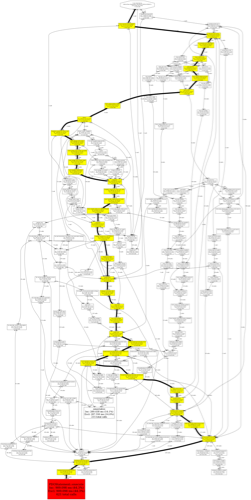Preparing for your first DrupalCon? Even if this isn't your first, here are a few tips and tidbits I've learned from my first DrupalCon last year, and would like to pass on to you. (I'm posting this now so you have time to order the things you need to make your conference experience better and get it shipped!).
Keep things you need handy
I expected to have some downtime every now and then to run back to my hotel room and grab something I needed for later in the day (like a power cord), but quickly realized that I wouldn't have downtime. Instead, I ended up attending many awesomesauce presentations, BoFs (Birds of a Feather gatherings), core conversations, and informal meetings continuously, from the time I got into the convention floors until about 8 p.m. (and later!).
Bring a bag large enough to hold your laptop or iPad, a charger, a few snacks (granola bars are great!), and any other little devices or chargers you'll need during the day.
Power to the People!
 Hotels and convention centers have a very low AC outlet / conference attendee ratio. Usually something like 1:100. Most laptops' batteries last 3-5 hours. You're going to have your laptop on and with you all day, and the battery will die if you don't charge up every now and then.
Hotels and convention centers have a very low AC outlet / conference attendee ratio. Usually something like 1:100. Most laptops' batteries last 3-5 hours. You're going to have your laptop on and with you all day, and the battery will die if you don't charge up every now and then.
One of the best things you can do, especially if you want people to not hate you for hogging an entire outlet for one laptop charger, is buy a travel power strip, like the one I bought for this year's DrupalCon—Monster's Outlets to Go Powerstrip*. There are a few other options out there, but I like this one the most due to its compactness. Some adapters even include or two USB plugs (though not all are created equal—check to make sure the USB plugs provide enough power to charge your device!).
Instead of hogging a wall jack all to yourself, you can now power one or two of your own devices, and let one or two other people charge their devices.
For non-US residents, be sure you have the proper power adapters for your devices!
Don't only go to sessions
I made the mistake of trying to attend every session that piqued my interest last year. It wasn't until the last day of the conference that I hopped out of a session that had lost my interest and found that I was missing some of the best parts of DrupalCon:
- Birds of a Feather gatherings (people basically come together and talk about/work through things things they have in common, like newspaper websites, Church sites, or a passion for DevOps!).
- Core Conversations (people who want to make Drupal and Drupal.org better come together and, well, make Drupal and Drupal.org better).
- The Expo area (talking to some of the people in Drupal consultancies, or people from hosting providers, or anyone else on the expo floor, is pretty enriching).
- The community (getting to meet people I converse with every week on drupal.org, in IRC, etc. is awesome).





